Huawei P20 Pro review: the three-eyed monster
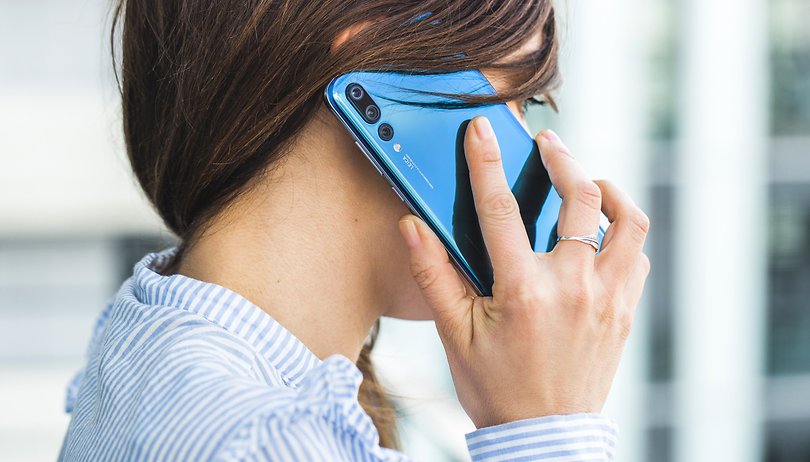

Huawei has enjoyed a rapid rise to prominence in recent years, and it should continue like this. But after the P10, which was a rather modest development, an impressive new flagship is needed. This is exactly what the Huawei P20 Pro, the top model of the new P series, is supposed to be. We've put the device through its paces, and can finally bring you our full review! Here's a hint: it scored pretty damn good.
Good
- High-quality, modern finish
- Very good camera
- Powerful Battery
- Current operating system
- Dual SIM with LTE
- Exellent call quality
Bad
- No wireless charging
- Material is slippery
- Memory isn't expandable
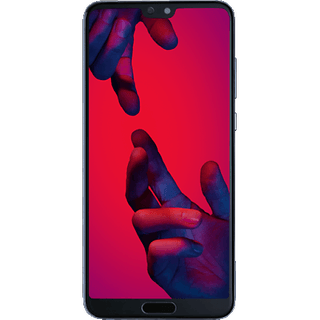
Huawei P20 Pro release date and price
Right now, we only know about the European price of the Huawei P20 Pro, which is a cool 899 Euro. That's a lot of money, but still a little less than Apple and Samsung demand for their top smartphones.
Given the suspicion with which Huawei is viewed by the US Government and security services, it remains doubtful whether this impressive device could land stateside. If it doesn't make it, American Android fans may miss out on something quite special, but it might be possible to get an unlocked device. You can read more about the troubles between US carriers and the brand here. Most recently, Best Buy announced that they will stop selling Huawei devices.
If you're one of the lucky ones who can get your hands on one of Huawei's smartphones, you could opt for an even more impressive version of the Pro: the Porsche edition, named the Mate RS. This device was announced during Huawei's press conference in Paris, and would set you back a whopping 1700 euros (around 2000 dollars!).
In the UK, the device has recently gone on sale at £799, with many operators offering deals such as Vodafone with a pay monthly contract at £47 per month. The device has also been officially released in India at a price of Rs 64,999.
Huawei P20 Pro design and build quality
The design trends for smartphones in 2018 are clear: narrow display edges, chic glass surfaces, metal frames - and the infamous notch, that gap in the upper display, which makes a fuller screen possible. Huawei follows all these trends with the P20 Pro, including the notch, which divides smartphone fans into two camps. According to Gizmochina, the front design of the phone with the notch is a drawback, as well as the absence of a headphone jack. It's a question of taste in the end, which every potential customer has to answer for themselves.
On the back of the Huawei P20 Pro you can see two innovations. One is the camera. For the first time, Leica has three lenses that are arranged vertically - or horizontally when shooting in landscape format. The second innovation is the new color Huawei has in its range. The P20 Pro shows itself in a shiny yet discreet purple, which shimmers greenish when tilted. Sounds a bit like a strikingly painted car from the tuning scene, looks the same, but less flashy, but actually quite modern and chic. Of course, there are also more subtle, boring color variations.
In comparison with the P10, some may prefer the glass finish of the new P20 series, some may not. In our opinion the P20 and P20 Pro offer much more than their predecessors without a doubt, in terms of design and everything else.
The design pleases along the line
The whole design of the P20 Pro Huawei has done really well. The shiny metal frame looks good and looks stable. Despite 6.1 inches of display diagonal, the P20 Pro is still reasonably compact. At 7.8 millimeters and 180 grams, the smartphone is neither very slim nor overly light, which underlines the high-quality overall impression, however. Fine details like the red stripe in the power button show the eye for small things that the Huawei designers have.

As chic as the design is and as eye-catching as the color is, one can't but think 'this is copied from the iPhone X'. And yes, indeed, the optical design of the P20 Pro does not look particularly original - on the contrary. The notch, the orientation of the camera, the shiny metal frame, the glass surfaces - all this gives the impression as if Huawei had taken a close look at the competition from Apple. What a pity, because the Chinese manufacturer had recently shown with the attractive Mate 10 Pro, for example, that it has the ability to create an independent design - why not here as well?
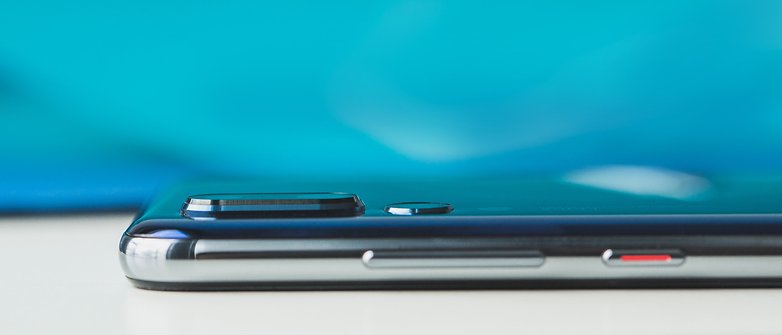
Perfectly finished and well equipped
Speaking of "ability": Huawei can undoubtedly build hardware and integrate it excellently, and the manufacturer also shows this with the P20 Pro. The workmanship is great and the pre-series devices appear without fault. The Huawei smartphone looks high-quality and as if from a single mould, we could find nothing to criticize.

A problem with the material is the fact that the Huawei P20 Pro is incredibly slippery. This is not so much of a problem in your hand, but always when you want to put the smartphone somewhere. In the test, the P20 Pro went it alone several times and slipped off the bedside table, sofa or coffee table. The problem can actually only be solved by a cover, which then, however, ruins its beautiful appearance.
Also, Huawei offers its own cases for the P20 Pro. We tried one of them and we weren't really impressed. The rubberized surface attracts dirt, and it's not too narrow at the bottom and doesn't fit properly, which has been a problem in the past with Huawei, at least for the Mate 9. The cases for the Huawei P10 look great and fit like a glove.
If you hate the notch, make it disappear!
Huawei moves with the times in two areas on the display. First, the P20 Pro's 6.1-inch screen has a notch at the top, where the front camera, earcup and notification LED are located. The notch became popular with the iPhone X and is currently being followed by many in the world of Android. What's the advantage? The display can be pulled up to the right and left of the recess to create more space. If you don't like the notch, you can hide it in the settings, the areas to the right and left of it are then displayed in black.
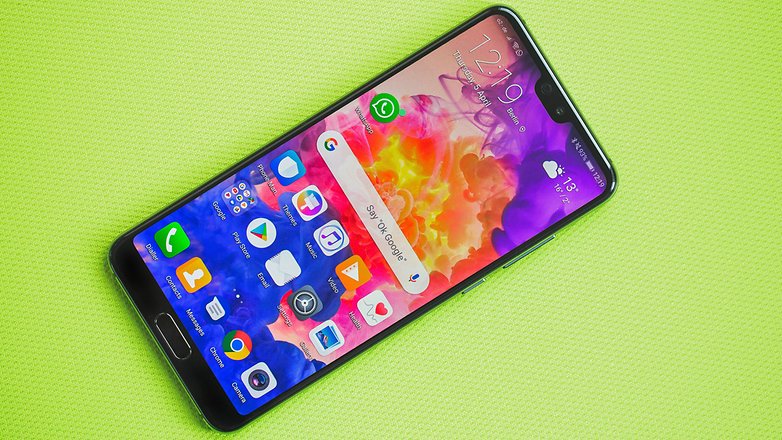
The second point where Huawei is modern is the choice of display technology. In the luxury class, the advantages of OLEDs are definitely greater than LCDs. Huawei remained committed to IPS panels for a long time, but now also uses OLEDs. A good decision, because the P20 Pro's display scores well in our test. Bright light, vivid colors, deep black, and a good viewing angle.

Sure, the 6.1-inch display has "only" FHD+ resolution, but the 2,240 x 1,080 pixels are perfectly sufficient to display everything in sharp detail. The slightly lower resolution saves power compared to QHD. If you like, you can reduce the resolution to 1,493 x 720 pixels to save even more battery. Compared to the other top smartphones of the year, which have a higher resolution, the P20 Pro doesn't have to shy away in the display test. This is confirmed not only by our own impression, but also by the accuracy measuring device we use.
Fast software updates are looking likely
Both Huawei P20 Pro comes with the latest Android 8.1 Oreo and its own EMUI 8.1.0 interface. The manufacturer's article about Android is always a matter of taste. Huawei still doesn't manage to make its own interface look as modern and chic as the naked Android. On the other hand: The look can be adjusted with themes and alternative launchers. Huawei does not yet have its own language assistant like Samsung's Bixby. But there is no need for this, because the Google Assistant is of course part of the overall package.
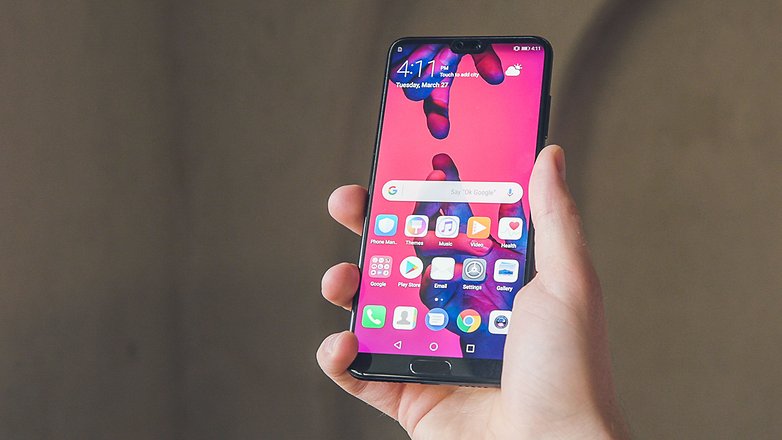
Huawei is represented with some models in Google's enterprise program, and the P20 Pro will probably be there soon. How is this relevant to you? It will bring the advantage of fast and reliable updates. Huawei must ensure this in order to stay up top. The Huawei P20 Pro should therefore be well supported with regular updates.
The Huawei P20 Pro has already received a first update of almost 3.5 GB in the course of our test. Among other things, the security patch level was brought up to the level of March 1, 2018. However, a detailed changelog cannot be obtained from Huawei, so it's unclear which changes have still been made. There were no noticeable changes though, and the stability and speed was excellent even before the update.
Notifications are still a problem
The control of the notifications under EMUI is still not great. The system mappings keep pushing themselves into the notifications, sometimes with insignificant things. Other notifications, such as the warning for the battery from 20 percent upwards, which pops up again and again, cannot be switched off. On the other hand, messages from third-party apps do not appear or do so with a delay. The notifications from Telegram and Revolut, for example, don't quickly or reliably appear. It's strange that Huawei obviously still hasn't solved this problem completely.
An update has already rolled out to the P20 Pro
Since we've had this device in the editorial office, the Pro has received a hefty update bringing a security patch and theme fix. There's not too much to mention, but some nice optimizations have been implemented on the device. Below we'll keep you posted about all of the latest updates and security patches:
Yesterday's chip with tomorrow's power
The performance of the Huawei P20 Pro is worthy of a flagship. Last year's Kirin 970 from Hisilicon is extremely powerful with 6 GByte of RAM. Although, this chip cannot quite keep up with the current Snapdragon and Exynos processors under laboratory conditions. Hardly anyone will seriously criticize this in everyday life, because the P20 Pro is wonderfully fluid and fast. Even small details like the subtle animations in the surface play a role, which make the display look soft and curved.
The NPU unit in the Kirin 970 is used in several parts of the P20 Pro, especially the camera. However, the AI methods are also intended to optimise power consumption, translation services will also benefit from this, and voice quality will also be improved. Huawei still has a small lead over the competition when it comes to AI, which will be expanded with new functions in the future.

The 128 GB memory is large enough; it's just a pity that the P20 Pro won't accept a memory card. In the detailed performance test, the P20 Pro not only had to pass the usual benchmarks, but also undergo further tests. We have also studied how the smartphone performs while gaming, and we talk about the controversial notch.
LTE Cat.18, Gigabit WLAN, Bluetooth with aptX HD, Dolby Atmos, USB-C - there's hardly anything to complain about with the other features. The removal of the 3.5 mm jack plug is a sign of the times, and a cheap adapter to the old connection is included in the box. The fingerprint sensor is a bit narrower than the P10, but still has its place under the display. The Huawei P20 Pro is a dual SIM smartphone that supports the same wireless standards on both slots. The times when you had to look closely at where to insert the SIM with the expensive LTE contract are over.
Good sound thanks to NPU & USB Type-C
The Huawei P20 Pro delivers stereo sound, using the lower speaker as the bass and the upper speaker for the treble. If you connect headphones, you'll be pleased with Dolby Atmos. The call quality of the Huawei P20 Pro is excellent in all situations, with both sides of the line being clear. To improve communication and reduce background noise, Huawei uses the NPU of the Kirin 970: According to Huawei, your own voice can be better distinguished from background noise with the help of the NPU, as these can be easily filtered out. Of course, this fact is a little too complex to check.
Huawei includes headphones with the P20 Pro, but music lovers will quickly throw them in the trash. The headset with the hard plastic ear parts is not even average in sound, and not even the change from jack to USB-C has changed that. Although the adapter is included, Bluetooth is still more convenient.
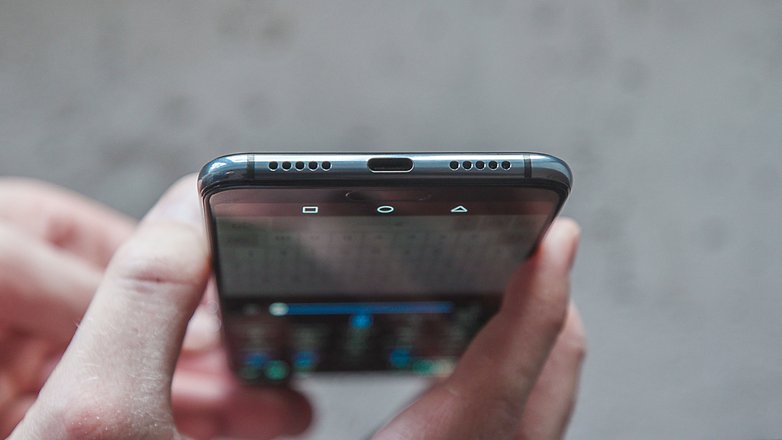
A camera like no other
One thing is certain: A camera like the one installed in the Huawei P20 Pro has never been seen. The triple sensor gives an interesting look at the future of photography: Computational Photography.
While the name of the camera system "Light Fusion Camera" sounds a bit like marketing nonsense at first, there is an exciting truth in this: According to the manufacturer, the smartphone always "merges" the information from all three camera modules to create a high-quality photo in a variety of settings.The three modules could hardly be more different.
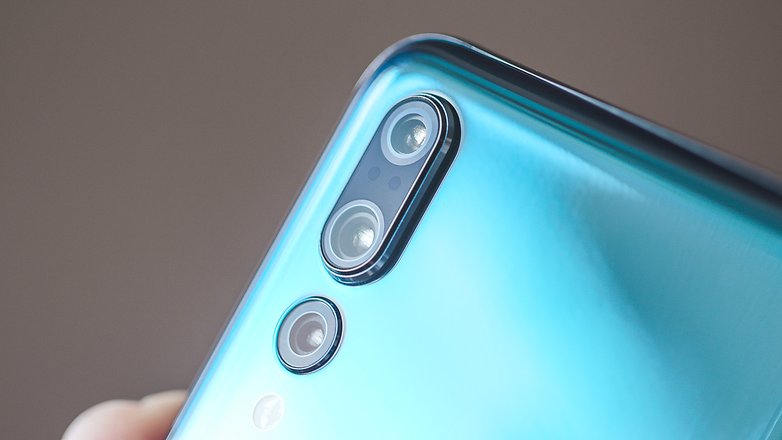
At the top of the corner is an 8MP sensor with a telephoto focal length of 80 millimeters in 35mm equivalent, and an aperture of f/2.4. Two wide-angle modules sit below: In the middle is an RGB sensor with 40MP resolution and f/1.8. Between the lenses is an active laser autofocus with a transmitter, receiver and a flash with its own color temperature sensor to adjust the flash to the light.
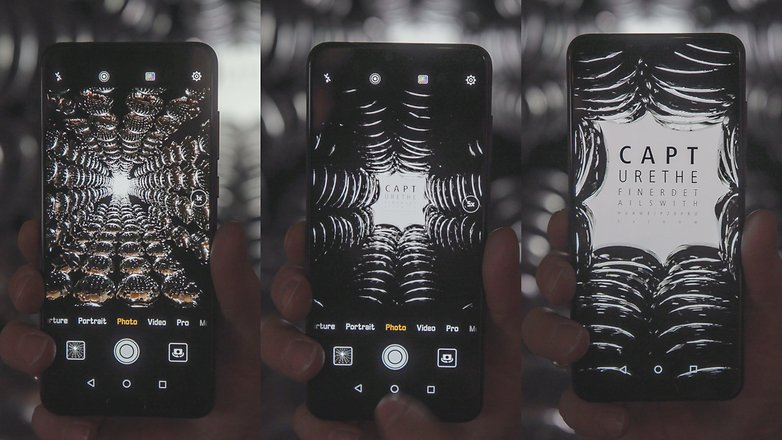
The bottom line for the user is a camera with fivefold hybrid zoom, which shoots 10MP photos with the factory settings, with up to ISO 51,200. The image quality should remain consistent, even when the fivefold zoom is fully extended. If you want, you can also increase the resolution to 40MP. In 10MP mode, the merged pixels should have an edge length of two microns, which is remarkable for a smartphone. Unfortunately, Huawei didn't tell us anything about the manufacturer and details of the individual sensors.
The zoom was very practical to use, and the Huawei P20 Pro displays more details than probably any other smartphone. The AI functions, which can be completely deactivated under "Master-AI" in the options, are usually, but not always correct. Here and there the software interferes a bit too much, so it sometimes helps to remove the suggestion in the viewfinder. The Bokeh effect hits the mark and puts exactly the part of an image in the foreground that should be there.

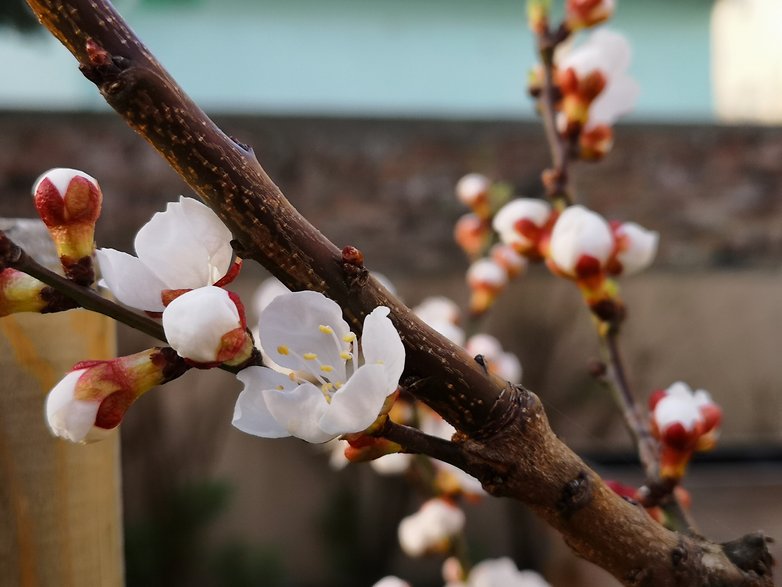
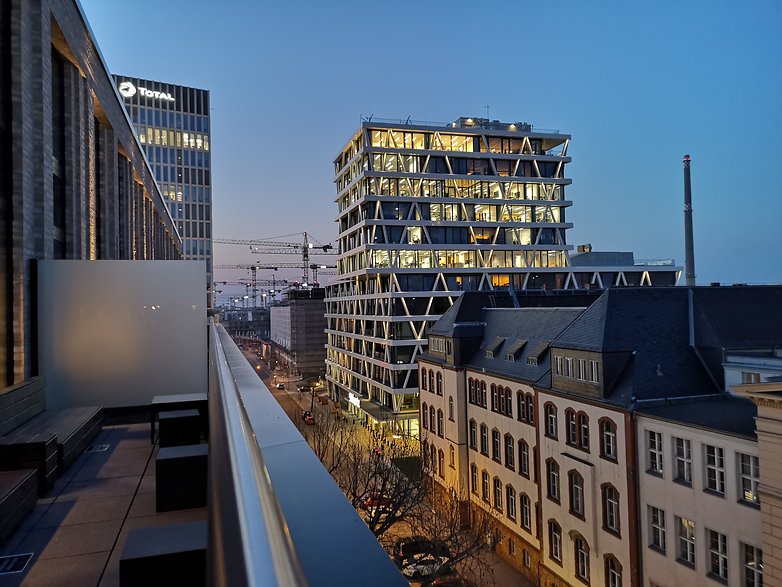

The NPU of the Kirin 970 is a big help
As with the Mate 10 Pro, the NPU built into the Kirin 970 should be a help to the keen photographer. According to Huawei, an image analysis with 30 fps is constantly running on the chip and recognizes objects in real time. The camera app then intelligently adapts the range of functions. For example, if a landscape is detected, it shows a spirit level, or a subframe for a group photo. Huawei also wants to improve the autofocus, and we were pretty impressed with it.
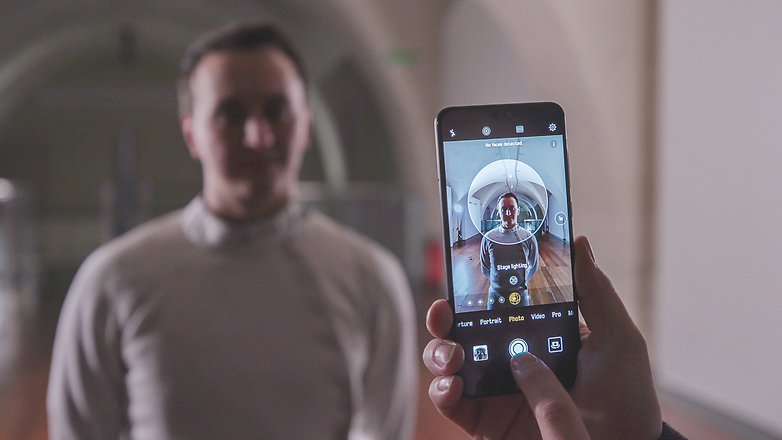
I really liked the feature of being able to create long exposures without a tripod. The P20 Pro stabilizes up to eight-seconds with handheld photos. No real time exposure is carried out, but numerous images are superimposed and then added to one image. If you want to do this for several seconds in Pro mode, you will notice the difference. This is just as impossible as with any other smartphone or camera, but the results of night mode are very impressive and sometimes look almost unnaturally good.
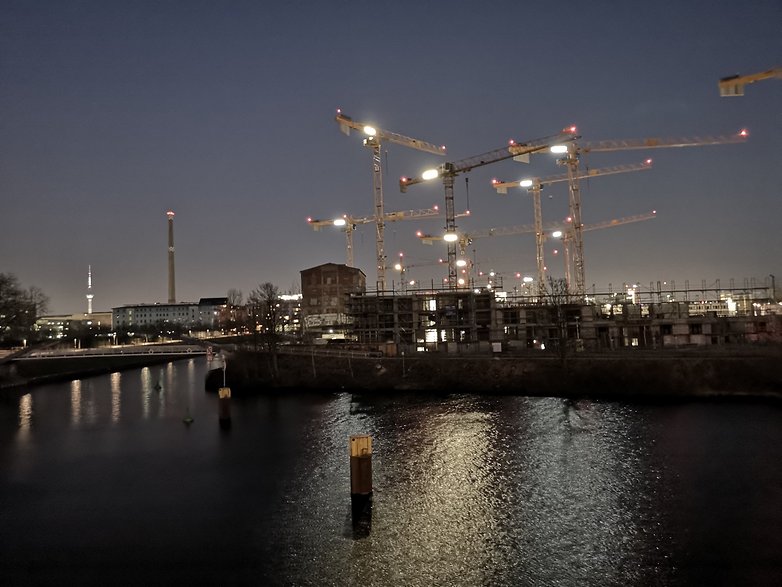
As well as this, the 2018 obligatory 960 fps video mode with 1280 x 720 pixels for Huawei is still impressive. Huawei records a 2.25 second video snippet with the first and last full second recorded at 30 fps, and in between 0.25 seconds at 960 fps. During playback, this results in a ten-second clip with exactly eight seconds of super slow motion in the middle.
Huawei has the power to worry Samsung, Apple and co in the camera department. Expectations have been raised - now Huawei must deliver. In a detailed camera test, Huawei proves that the P20 Pro is one of the best camera smartphones on the market. There, you will find a lot more pictures in full resolution, too.
The P20 Pro camera has even earned the top spot on DxOMark, a website that holds information about smartphone cameras, which can be a great source of information when deciding what will be your next device (but not always 100% reliable). Also among the top ranked phones is the Pixel 2, which is well-known for its camera quality. We compared the two devices:
The battery won't let you down
How long the battery lasts on a smartphone depends on how you use it. The P20 Pro has more than enough power in the battery to last a day or more without charging. The battery has a very high capacity of 4,000 mAh and is at the same level as the Mate 10 Pro. Although some platforms other than Huawei and Hisilicon work a little more energy-efficient and use less battery capacity, what counts in the end is what the customer gets as runtime. Thanks to quick-charging technology, recharging is fast, and a completely empty battery will be full again in just under two hours. All measured values and further information about the battery of the Huawei P20 Pro can be found here:
This is a small detail, but kind of annoying: even though glass is now used on the back of the smartphone, Huawei has decided not to equip the P20 Pro with wireless charging technology. That would have been the icing on the cake. Huawei shows that this is possible with the Porsche Design Mate RS which is technically similar to the Pro and has a Qi loading coil under the glass lid, even with a wireless quick charge of up to 10 watts. This is also due to the fact that the USB-C connector is put under stress when cable headphones and chargers are connected due to the missing jack. Bottom line: the Huawei P20 Pro is one of the absolute top batteries even without Qi.
Huawei P20 Pro technical specifications
Final verdict
The test shows it clearly: Huawei moves with the P20 Pro on about the same level as Samsung with the Galaxy S9 or Apple with the latest iPhone. In many cases, this luxury class smartphone decides on the personal taste or a single feature that is important to the individual customer.
With the Huawei P20 Pro, this could well be the triple camera from Leica, because it has a lot to offer from mega-resolution to zoom to super-slow-motion and creates impressive pictures. Although the design of the smartphone seems very similar to Apple, the P20 Pro is chic and high quality. The battery is strong, the performance in all situations fluid and the equipment complete.
But the price? Oh well. 899 euros as an EIA are not little, of course. But the competition from the upper class is at least as expensive. The drop in prices, which strikes Huawei as well as Samsung , will ensure that the P20 Pro will be much cheaper in a few months. In any case, the Huaswei P20 Pro is not too expensive compared to the competition.
With this new flagship, Huawei is surely going to continue its success.
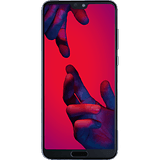



















No headphone jack = no buy.
It's fine. I just wonder whether there is a stock text editor app and what it is.
great phone
Triple cameras might seem very tempting on a phone,but Huawei software is totally different from Samsung so you are restricted what you can do on Huawei phones,the Camera humps stick out to much,so you can not lay the P20 pro on a Flat surface,so All the time Huawei as took to create the backs will end up being covered up with a phone case,so the phone will end up bit thicker,Card slot missing was not a correct idea from Huawei so loads will be not interested in buying this phone,Samsung did this with the S6 series phones and the Sales was not very good,so brought it back on the S7 series phones and sold millions
never heard of nano sim according to what i read in specs it is expandable with nano sim
The 3 rooms should bring the perfection in the photos. For an affordable price, the quality of the photos should be the same. I am very curious about a practical test for everyday use.
Something different with the cameras. Too bad about AT'T & Verizon. The competition against Samsung & Apple would have been nice here in the US. Is the US government making the proper assumption about the I spyware? Huh!
Unfortunately I use Verizon as my carrier and had hoped the deal went through. But alas, it didn't. I would have definitely given the P-20 a shot. Huawei phones have vastly improved & their camera's!
It's to my understanding if you buy an import there is no warranty, so for the money it's not worth it. It's definitely not a cheap phone!